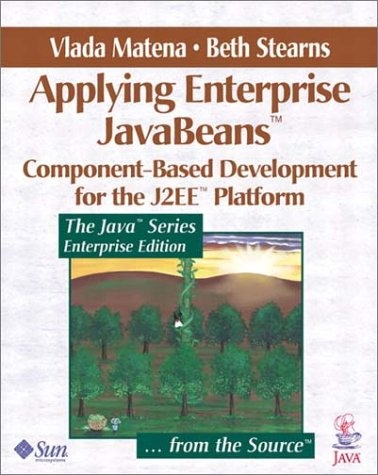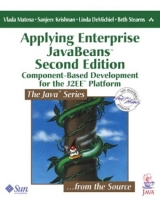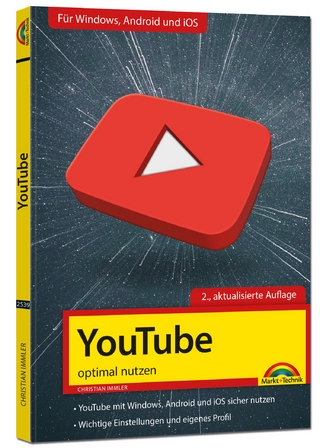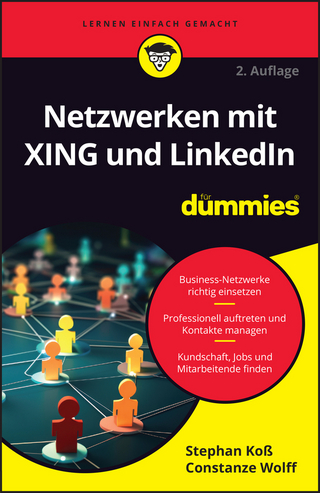
Applying Enterprise JavaBeans™
Addison Wesley (Verlag)
978-0-201-70267-5 (ISBN)
- Titel erscheint in neuer Auflage
- Artikel merken
In this authoritative book, Sun's Enterprise JavaBeans architect demonstrates how to leverage the full power of EJB to deploy component-based enterprise systems faster, and more effectively. Start by understanding EJB's architecture and its interrelationships with the rest of Sun Microsystems' rich Java 2 Enterprise Edition platform for large-scale business development. Compare each architectural option for implementing EJB in your applications, and understand when to use each; review each element of an Enterprise JavaBean; then master container tools and services, EJB roles, session beans, entity beans, transactions, security, and more. The book includes extensive sample code, full-fledged application examples, and a complete API reference. It will be an ideal resource for everyone implementing Enterprise JavaBeans applications: in-house corporate developers, third-party developers creating EJB applications and reusable components; Java developers; architects, managers, and other IT professionals.
Vlada Matena is a co-founder of Lammina Systems Corporation where he designs a scalable Java platform for modular Linux servers. He was the originator and chief architect of Enterprise Java Beans and a founding member of the J2EE architecture team at Sun Microsystems, Inc. Beth Stearns is the principal partner of ComputerEase Publishing, a computer consulting firm she founded in 1982. Among her publications are Java Native Interface in The Java Tutorial Continued (Addison-Wesley), “The EJB Programming Guide” for Inprise Corporation, and “ Understanding EDT, ” a guide to Digital Equipment Corporation's text editor. 0201702673AB09232002
(NOTE: Each chapter ends with a Conclusion.)
Foreword.
Preface.
1. Advantages of the Enterprise JavaBeans Architecture.
From a Two-Tier to J2EE Architecture.
Two-Tier Application Architecture.
Traditional Three-Tier Application Architecture.
Early Web-Based Application Architecture.
J2EE Application Architecture.
Advantages of the Enterprise JavaBeans Architecture.
Benefits to the Application Developer.
Benefits to Customers.
2. Enterprise JavaBeans Architecture Overview.
What Are Enterprise JavaBeans Applications?
Business Entities and Processes and Enterprise Bean Types.
Business Entities.
Business Processes.
Implementation of Business Rules.
Enterprise Bean Types.
Choosing Entity Beans or Session Beans.
When to Use Dependent Objects.
Structure of Enterprise Beans.
Enterprise Bean Home Interface.
Enterprise Bean Remote Interface.
Enterprise Bean Class.
Deployment Descriptor.
Container Tools and Services.
Container Artifacts.
Container Runtime Services.
3. Enterprise JavaBeans Roles.
EJB Roles.
Bean Developer.
Application Assembler.
Deployer.
System Administrator.
EJB Container Provider.
EJB Server Provider.
Tools.
4. Working with Session Beans.
When to Use Session Beans?
Using Session Beans in Web Applications.
Using Session Beans in Traditional Three-Tier Applications.
Understanding the State of a Session Object.
Stateful versus Stateless Session Beans.
Understanding Conversational State.
Overview of the Example Application.
User View of the Application.
Main Parts of the Application.
The “Benefits Enrollment” Business Process.
Enrollment EJB Stateful Session Bean in Detail.
Enrollment EJB Session Bean Parts.
Enrollment Bean Session Bean Class Details.
Client Developer's Perspective.
Payroll EJB Stateless Session Bean.
Payroll EJB Stateless Session Bean Parts.
Client Developer's Perspective.
Database Schemas.
Employee Database Schema.
Benefits Database Schema.
Payroll Database Schema.
Container-Provided Benefits.
5. Session Bean in its Container.
Container Artifacts.
How the Container Manages Session Beans at Runtime.
EJB Home Interface Lookup.
Session Object Creation.
Business Method Invocation.
Session Bean Passivation and Activation.
Session Object Removal.
Session Bean Timeout.
6. Understanding Entity Beans.
Client View of an Entity Bean.
Home Interface.
Remote Interface.
Primary Key and Object Identity.
Entity Object Life Cycle.
Entity Bean Handle.
Bean Developer View of an Entity Bean.
Entity Object Persistence.
Entity Bean Class Methods.
Entity Bean Instance Life Cycle.
Using the ejbLoad and ejbStore Methods.
Designing the Entity Bean Remote Interface.
Concurrent Invocation of an Entity Object.
Using Entity Beans with Pre-Existing Data.
7. Entity Bean Application Example.
Application Overview.
Problem Description.
Main Parts of the Application.
Distributed Deployment.
Pre-existing Parts at Star Enterprise.
EmployeeDatabase.
Payroll System.
Parts Developed by Wombat.
Overview of the Wombat Parts.
EnrollmentEJB Session Bean.
Employee EJB Entity Bean.
Selection EJB Entity Bean.
Wrapper Plan EJB Entity Bean.
Enrollment Web Web Application.
Benefits Admin Web Web Application.
Benefits Database.
Packaging of Parts.
Parts Developed by Premium Health.
Overview.
Premium Health Plan EJB EntityBean.
Helper EJB Session Bean.
Premium Health Admin Web Web Application.
Premium Health AdminApp.
Premium Health Database.
Packaging.
Parts Developed by Providence.
Overview.
Providence Plan EJB EntityBean.
Providence Service Web Web Application.
Packaging.
Summary of the Integration Techniques.
Bean Provider Publishes EJB Client-View Interfaces.
Client Provider Publishes EJB Client-View Interfaces.
Use of Container-managed Persistence.
8. Understanding Transactions.
Declarative Transaction Demarcation.
Transaction Attributes.
Transaction Attribute Values.
Transaction Attributes for Sample Application.
Programmatic Transaction Demarcation.
Transaction Demarcated by a Client.
Transaction Demarcation by a Session Bean.
Pitfalls of Using Programmatic Transaction Demarcation.
9. Managing Security.
Responsibilities of the System Administrator.
Administering Users and Security Principals.
Managing Principal Mapping.
Responsibilities of the Container Provider.
Authentication and Authorization Tasks.
Managing Multiple Applications and Domains.
Application Provider's View of Security.
Client Authentication.
Authorization.
Declarative Security Mechanism.
Security Roles.
Method Permissions.
Programmatic Security API.
Example Application Security.
Deployer's Responsibility.
Deploying Wombat's Enterprise Beans.
Deploying Premium Health's Enterprise Bean.
Deploying Providence's Enterprise Bean.
Appendix A: API Reference.
EJB Object Interface Methods.
EJB Home Interface Methods.
Enterprise Bean Interface.
EJB Context Interface Methods.
EJB Meta Data Interface Methods.
Entity Bean Interface Methods.
Entity Context Interface Methods.
Handle Interface Methods.
Home Handle Interface Methods.
Session Bean Interface Methods.
Session Context Interface Methods.
Session Synchronization Interface Methods.
Exception Classes.
Create Exception Class.
Duplicate Key Exception Class.
EJB Exception Class.
Finder Exception Class.
No Such Entity Exception Class.
Object Not Found Exception Class.
Remove Exception Class.
Appendix B: Code Samples.
CCI Interface Classes.
Data Access Command Beans.
Glossary.
Index. 0201702673T04062001
| Erscheint lt. Verlag | 9.1.2001 |
|---|---|
| Verlagsort | Boston |
| Sprache | englisch |
| Maße | 187 x 233 mm |
| Gewicht | 678 g |
| Themenwelt | Mathematik / Informatik ► Informatik ► Web / Internet |
| ISBN-10 | 0-201-70267-3 / 0201702673 |
| ISBN-13 | 978-0-201-70267-5 / 9780201702675 |
| Zustand | Neuware |
| Informationen gemäß Produktsicherheitsverordnung (GPSR) | |
| Haben Sie eine Frage zum Produkt? |
aus dem Bereich



